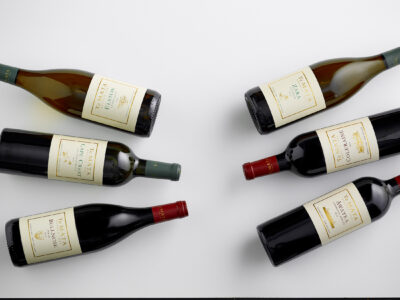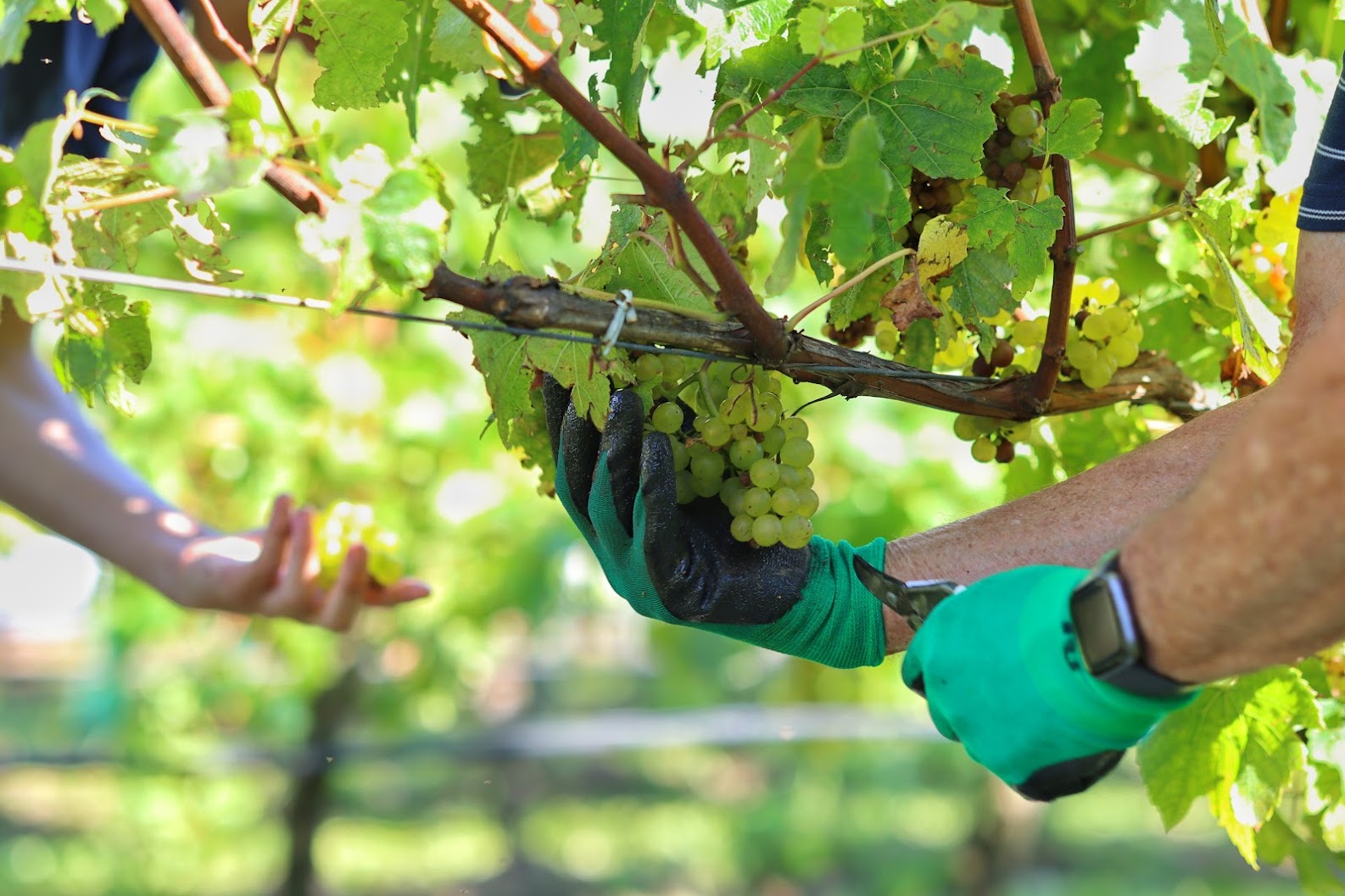2023 will be a lesson in “never count your chickens before they’re hatched.” It was a season that took Te Mata to new frontiers, and one we can’t wait to share with you.
An extreme year setting new records on multiple fronts, 2023 was the:
- longest growing season ever (budburst to harvest +10% longer than LTA)
- Lowest yielding (-30% on LTA)
- Smallest berry size ever
- 2nd Hottest
- Wettest
- Longest harvest period (53 days)
- Most expensive (+50% on LTA)
and, had a historic cyclone (Gabrielle) in mid-February thrown into the mix.
The extraordinary conditions produced some extreme results in the wines:
The best performers were Cabernet Sauvignon, and its associated blending partners of Merlot and Cabernet Franc, (which all had stellar results, and will produce amongst the greatest wines ever at Te Mata Estate) within the red wines, and Sauvignon Blanc amongst the whites. Syrah was also very strong. It is important to note that all of these are late varieties which were unripe and unaffected when mid-February’s cyclone hit Hawke’s Bay. In fact, the last of these were harvested in mid-April, a full two months later.
Unsurprisingly, the most difficult wines were from the earliest ripening varieties; Pinot Noir (Te Mata Estate did not harvest a single Pinot Noir grape in 2023), with Gamay Noir and Chardonnay also impacted (yields of these down more than 50% to achieve quality).
Spring was early, following another very mild winter, with another early budburst repeating the early starts of the recent five years (if this trend continues, we may have to re-evaluate what we consider as early). The early start can mean increased frost fighting, but this year saw only a few frosty nights and no damage from any of these. At this point, the long-term weather forecasts were indicating a warm and wet “El Nino” season, and these conditions really began to manifest in the late spring and early summer, prompting significant canopy growth. Flowering was strong, with a record number of flower clusters suggesting a high-yielding harvest. We responded by increasing planting of inter-row crops to extract soil moisture, opened up the vine canopies to the maximum extent with extensive shoot removal and full leaf plucking.
The overcast, humid conditions continued, so in late December we took extreme action; severely reducing yield, mechanically shaking all vines, and dramatically increasing spraying. It was an enormous workload, but these vineyard interventions had a tremendous impact on the final fruit quality. Together with the weather conditions, they dramatically constrained berry development leading to very small grapes with thick skins, assisting to withstand disease and splitting. This was vitally important as February brought record rainfall with Gabrielle and two other notable rain events. Thankfully, the main cyclone impact was north of us and, with all our vineyards being on higher, free-draining ground, we sustained little direct damage.
Harvest commenced in the last week of February, beginning in tricky circumstances as the early varieties had varying degrees of condition requiring very strict selection and careful handling. Thankfully the weather had cleared and held dry, fine and steady throughout the entirety of the two-month harvest period. Once the earliest harvests were over, the remaining varieties reaped the full benefit of the sustained fine autumn weather – hanging on and on towards full ripeness in clear, warm autumn sunlight.
The resulting wines are quite remarkable. Cabernet Sauvignon is the undoubted star of the vintage with intense concentration, bright ink-black colours, huge extract, beautiful ripeness (generally 24 brix), and great length. Merlot and Cabernet Franc are likewise brilliant. These will produce amazing blends. The Sauvignon Blancs are amongst the finest ever at Te Mata, and the Syrahs are likewise showing very strong. These wines will astound, and especially so considering the generally poor expectations of a growing season that was written-off before the first grapes were even picked.
2023 will be a lesson in “never count your chickens before they’re hatched.” It was a season that took Te Mata to new frontiers, and one we can’t wait to share with you.
Download the Technical Report from Te Mata Estate here.





